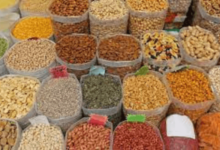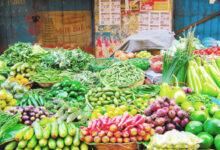How to Choose the Right Moisture Monitoring Method
The practice of monitoring the moisture levels of soil is crucial in providing the right amount of water for crops at the right times. This, in turn, ensures a lot of benefits such as higher crop yields, better crop quality, improved plant health, and reduction or prevention of diseases.
In addition, it also results to the more efficient and effective use of water resources, which leads to cost savings down the line.
👉 Relocate to Canada Today!
Live, Study and Work in Canada. No Payment is Required! Hurry Now click here to Apply >> Immigrate to CanadaThere are various soil moisture monitoring devices and systems available in the market today, and it might be overwhelming to choose among them. Among the primary options available to farmers are on-the-ground and aerial monitoring systems.

Aerial monitoring makes use of light planes and drones to collect high-resolution digital images of entire fields, which are then used to produce meaningful agricultural data.
It offers farmers a quick yet comprehensive overview of the condition of their crop and soil. On-the-ground systems, on the other hand, can be either stationary or portable.
Monitoring on-the-ground sensors one by one can take up a lot of time, but the different tools and systems available today make this task much easier.
In order to select the right solution that fits the needs of their farm, growers need to take the following into consideration.
Information
What kind of information is required from the moisture monitoring device? Some give basic wet or dry indicators that serve as a simple guide to reducing plant stress and minimizing water loss in the field.
👉 Relocate to Canada Today!
Live, Study and Work in Canada. No Payment is Required! Hurry Now click here to Apply >> Immigrate to CanadaOn the other hand, there are more complex devices that provide detailed information such as the depth and amount of irrigation, root activity and development, irrigation timing and forecasting or irrigation scheduling, soil temperature, etc.
Experts advise that data at the minimum should provide soil moisture readings for the plant root zone prior and after an irrigation event or rainfall, as well as additional readings between events as much as possible.
This can help establish a pattern of water use and at the very least indicate whether over or under irrigation is occurring.
How the information is presented is also important for the moisture monitoring insights to be usable. There are devices that provide relevant software to appreciate the data better through graphs, charts, or comprehensive and historical spreadsheets.
Be aware of the possibilities as well as limitations of a particular device in information gathering and if the supplier is willing to provide continuous training and support.
Site Factors
The physical conditions of an irrigation site also largely determine the ideal or suitable type of moisture monitoring technology. Soil type is the first factor to consider, as device performance and information gathering may be affected by this.
For instance, capacitance probes may not provide accurate information if placed in clay-type soil that is prone to drying and cracking. The salinity levels of soil may also similarly affect sensors.
The irrigation systems used itself is also important to consider. Surface irrigation techniques may make manual readings difficult and may damage sensors and access tubes with too much water.
Drip and micro irrigation methods, on the other hand, require careful and correct selection of representative monitoring locations to achieve uniform distribution of sensors, and in turn gather accurate representative data.
Finally, the type of crops planted in the site also influence which moisture monitoring device is appropriate. For example, deep-rooted crops may require additional sensors or a single sensor with the capability of providing readings at multiple depths.
Crops with annual harvest, meanwhile, may require sensors to be installed after crop emergence, and then removed just before harvest at the end of the season. Other factors related to crop type are the machinery or equipment used, as well as human traffic in the area, which may affect the placement and performance of the sensors.
Device Quality & Performance
Finally, of course, go with the moisture monitoring device or system that ensures reliability, durability, utmost accuracy, and excellent product or service quality. The sensors should be able to withstand the exacting outdoor conditions in the field.
It is also important that the supplier goes the extra mile in terms of necessary after-sales support, such as software usage training, device maintenance and monitoring, and the like.
Upgrading to state-of-the-art moisture monitoring system requires considerable cost and planning, but it will definitely contribute to increased profitability and operational efficiency in the field in the long run.
It is important to work with a solutions provider that acts as a partner in ensuring that the right moisture monitoring system is in place, and that can customize solution for specific needs if necessary.





